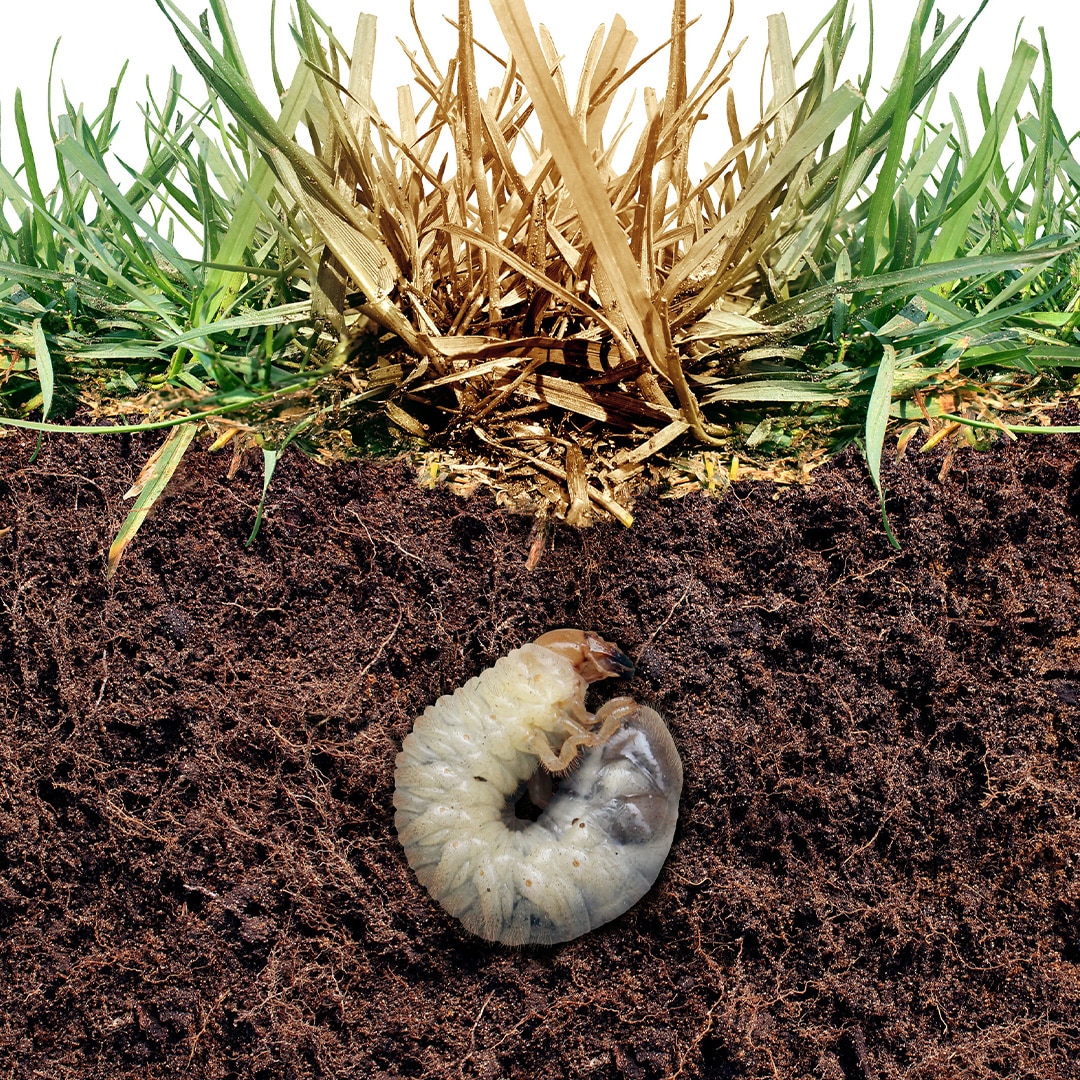By Holly Owens
Contributing Writer
Grubs, the larvae of beetles, are a common nuisance for gardeners and lawn enthusiasts. These destructive pests can damage your lawn by feeding on grass roots, leading to thinning, yellowing, and patches of dead grass. What’s more, grubs attract other unwanted visitors like raccoons and skunks, further complicating the issue.
After experimenting with countless methods over the years, I’ve found a surprisingly simple yet effective solution—one that my dad taught me. This approach takes just 2 minutes to implement, requires minimal effort, and most importantly, it works.
What Are Grubs and Why Are They Problematic?
Grubs are the immature stage of beetles like Japanese beetles, June beetles, and European chafers. These white, C-shaped larvae live in the soil and feed on the roots of grass. The feeding weakens your lawn, leaving it vulnerable to further damage.
Grubs emerge when adult beetles lay eggs in the soil, typically in late summer. Once hatched, the larvae begin feeding on grassroots, burrowing deeper to overwinter. As spring arrives, the grubs resurface to continue feeding before maturing into adult beetles, starting the cycle over.
The Trick: An Effortless and Natural Solution
The method I use is incredibly simple and relies on a common household product: dish soap. It’s fast, easy, and doesn’t require harmful chemicals. Here’s how it works:
Step-by-Step Guide
- Gather Supplies:
- A bucket or large watering can
- Dish soap (a biodegradable, eco-friendly option is best)
- Water
- A hose or watering nozzle (optional)
- Mix the Solution:
- Fill the bucket or watering can with a gallon of water.
- Add 2-4 tablespoons of dish soap. You don’t need to be precise, but this amount is typically sufficient.
- Apply the Solution:
- Identify areas where the grass is thinning, yellowing, or dying—these are likely where the grubs are.
- Pour the soapy water evenly over these areas. For larger areas, a hose-end sprayer attachment can make the task easier.

- Wait and Observe:
- After applying the solution, wait a few minutes. The dish soap irritates the grubs, forcing them to surface to escape the discomfort.
- Dispose of the Grubs:
- Once they appear on the surface, you can collect and dispose of the grubs. Birds often eat them, so leaving them exposed might even let nature take care of the cleanup.
Why This Works: The Science Behind the Soap
Dish soap helps by reducing the surface tension of water, allowing it to penetrate the soil more effectively. When it contacts the grubs, it irritates their bodies and forces them to emerge. Additionally, the soap can clog the grubs’ breathing openings, making it harder for them to stay buried.
While this solution doesn’t kill the grubs, it makes them easier to remove. You may need to repeat the process a few times or combine it with other treatments, such as nematodes or milky spore, for a more permanent solution.
Benefits of Using Dish Soap
- Eco-Friendly: Unlike harsh chemicals, dish soap is safe for the environment, pets, and family.
- Cost-Effective: All you need is dish soap and water, making this method very affordable.
- Quick and Easy: It takes just a couple of minutes and requires minimal effort.
- Instant Results: You’ll see the grubs surface almost immediately, providing quick satisfaction.
Additional Tips for Preventing Grubs
While this method works well to address current infestations, prevention is key. Here are a few tips to keep your lawn grub-free:
- Healthy Lawn Care: Regularly water, mow, and aerate your lawn to encourage deep root growth.
- Beneficial Nematodes: These microscopic worms target and eliminate grubs without harming your grass.
- Milky Spore: A natural bacterium that specifically targets Japanese beetle grubs. Once established, it can provide long-term control.
Conclusion
Grubs can be a frustrating problem for homeowners, but with this simple method, you can take control in just minutes. Using dish soap to irritate the grubs and force them to the surface is a fast, effective, and eco-friendly solution. By following these steps and taking preventive measures, you can keep your lawn healthy and green throughout the year.
